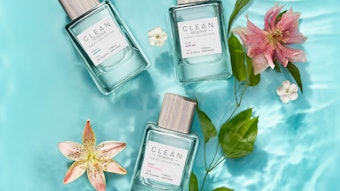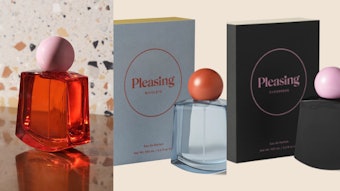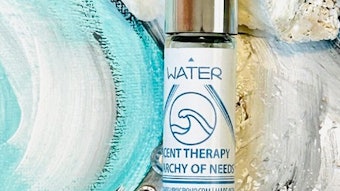The launches will soon begin for the Christmas buying season, with the fragrance counters already on overload. So what can a creative marketer conjure up to catch the consumer’s eye, or shall we say nose?
Marketers dream of a fragrance launch that involves a name with cachet, such as a celebrity tie-in, a unique, eye-catching bottle and knockout packaging. But what thoughts does the perfumer have when he reads the profile, when his imagination goes wild with new captive notes he wishes to incorporate, when the profile itself inspires the spectral adjectives of illusion?
In the beginning stages of the concept, once a personality has been signed up, an appropriately mysterious name selected, and something catchy or trendy conjured to register in the consumer’s mind—what new bases or aromatics can snag a memory vein in a target consumer?
Transporting the Consumer
Our sense of smell transports us to another place. It triggers our memory bank to recall something pleasant or unpleasant we have experienced. The olfactory nerves enjoy close proximity to the brain as neighbors to memory nerves and the limbic system, creating a symbiotic relationship.
Many scents have a common pleasurable experience, but there are also those that send mixed signals, causing differentiation in the reaction from one person to another. For instance, a beautiful natural rose scent can give one person a sensual, pleasurable experience and yet, for another, conjure up an unhappy memory.
A fragrance we developed at Jovan called Grass Oil illustrates this point. Riding the high of the natural trend of musk, we developed a very natural wet tea rose with some grassy earth notes in it, which was very appealing to the younger set. When we presented it to a head buyer at one of the national pharmacy chains, his reaction was overwhelmingly negative: “This reminds me of my grandmother’s funeral.” In the wake of instantaneous cold feet, we stopped the blending and were left with thousands of dollars worth of useless perfume oils. This scent had a total negative recall for him. Personal experiences have a great deal to do with how a scent registers with people. In fact, a great deal of fragrances are chosen by how one perceives a scent on someone else. Therefore, the marketer wants his fragrance to make a statement, to be recognizable.
Buyer Appeal
In the science of selling scents, how can a perfumer appeal to a large audience while still making a statement? Some fragrances by their very nature are meant to become the person who wears them. “Fragrance has become very mass-market now, unless it is a boutique firm willing to try something different. The major houses are too afraid of pioneering something too unique because of the cost of a launch,” said Steve DeMercado, creator, Fragrance Resources. “Innovation comes from all palettes and the world around us.” Discovering new notes in nature and duplicating them to create new identities in fragrance is the hallmark of the most innovative firms in the industry.
Givaudan, for example, currently has five programs working to discover new natural scents and isolate them in head space, and to synthesize those favorably for perfumery.
The Perfumer’s Role
A perfumer looks for something new to give character to his fragrance while retaining enough familiarity and beauty to the background to have wide appeal. Long lastingness is also a sought after quality. Estée Lauder was definitely a pioneer in creating strong and long-lasting scents. Her concentrations defied normal standards. In many cases they seemed overwhelming at first, but those scents set a standard.
Estée Lauder brought identity to the fragrances she marketed. Recall the statements she made with Youth Dew, White Linen, Aliage, Beautiful, Clinique, Pleasures and Beyond Paradise.
Jean Paul Guerlain created a signature for all of his fragrances by using specialty tinctures of naturals, ensuring the same qualities of his oakmoss and using a very appealing vanillic amber oriental base. The richness of his fragrances when worn became a trail of sensuality.
Jacques Polge, master perfumer at Chanel, is an expert with the chypre base. His Cocoa collections and Allure and Chance have always made statements on the skin.
Today’s modern materials have much better consistency and staying power. Musk’s popularity is due in part to its ability to drive a fragrance for hours and is a historic fixative. After the top note evaporates, a perfumer must decide if the recognizability will come from the beginning or in the dryout of the base note.
Creating a recognizable scent, while finding the right balance between a signature new chemical and some of the softer, natural perfume ingredients that enhance the scent on the skin, is definitely a challenge to modern perfumery.










